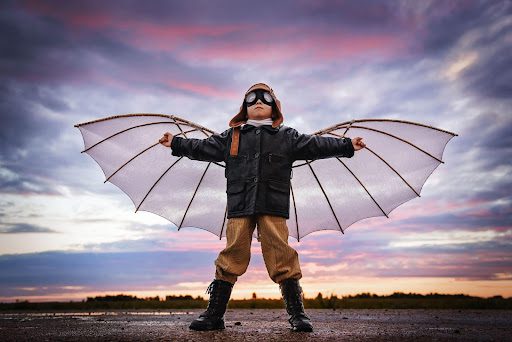When one considers the different expressions of the imagination, mental illness is not necessarily the first aspect to arise. Yet imagination, mental health disorders, and mental health at large, are actually intertwined, and can influence one another in a number of ways. Read on to discover how these elements might interact and envision how your own imagination may play a part in your mental health.

Imagination is a mental process that conjures images and other types of sensory experiences, even in the absence of sensory data. An individual lost in imagination, for instance, can envision standing before the United Nations Assembly, and rousing the global representatives in attendance with their own fiery speech – even though they have never visited the UN Headquarters. The power of wishful thinking!
In addition to sensor-related activation, the imagination can also produce thoughts, feelings, fantastical and nonrealistic imagery, or a manifestation of one’s dreams and desires.
One’s imagination can be activated during waking hours (sometimes referred to as daydreams), or in sleep as dreams. It combines different elements of the individual’s actual experiences from their past and present, with aspects of their inner life. The end result can be pleasant, frightening, and even traumatic, touching upon a variety of issues and emotional states that tug on the individual’s attention.
These days, one’s imagination is not seen as merely a momentary distraction. Rather, it acts as a way to work through challenges in one’s life. At times, it can help work toward actualizing one’s goals and aspirations.
A study from 2021 echoed this sentiment, finding that individuals with greater well-being and lower levels of depressive symptoms tended to possess the following attributes:
One’s imagination can therefore aid individuals in better understanding what it is they want to achieve, how they are more likely to do so, and what their potential obstacles may be—without necessarily attempting to do so in real-life. Additionally, in situations where one has tried and was unsuccessful in reaching their desired goal, their imagination can help understand what went wrong, and better prepare them for their next attempt. On a related note, those who found their goals to be more attainable, perceived the future more positively.
Interestingly, though the popular image of the tortured artist has linked creativity with depression, research shows that it is bipolar disorder, and not depression, that is more often associated with greater creativity. More specifically, it seems that manic episodes, which are experienced as part of bipolar disorder, may be related to spurts of creativity. There has been no scientific evidence to suggest that depression and creativity are somehow connected, or that one can bring about the other. That said, depression can include difficulty concentrating, and can influence the content of one’s imagination, making it harder for them to focus on a more encouraging, empathetic, or optimistic thought process.
Having difficulty imaging beyond the concrete situation before you can signal a number of possible reasons:

An individual with an overactive imagination is one whose tendency to focus on their fantasies is so frequent and central to their waking hours, as to distract them from actually working toward achieving their own goals, or developing real-life, fulfilling relationships. Their quality of life often suffers as a result, causing them to retreat ever further into their own imagination.
More extreme cases of an overactive imagination may cross over into having a fantasy-prone personality (FPP). Cases of FPP have a harder time distinguishing between external reality and their own, internal fantasies. They have also been found to be more easily hypnotized than the general population.
Certain cases, where one’s imagination and eccentricity are both a key feature of their personality, and the cause of their own, personal anguish, qualify for a schizotypal personality diagnosis. Those with this condition possess a unique life perspective and are often faced with a diminished ability to create and sustain close relationships with others. Some are characterized by magical thinking, where they believe they can influence external reality through the power of their mind. They may also believe in telepathy or clairvoyance, with extreme cases also contending with delusions.
Taken even further are cases of psychosis, which tend to include delusions, hallucinations, or both. According to the American Psychiatric Associations (APA), psychosis is a mental health disorder that causes a disconnect from reality in the form of often paranoid false beliefs (delusions), or in the imagining of sensory stimuli that does not exist (auditory or visual hallucinations).